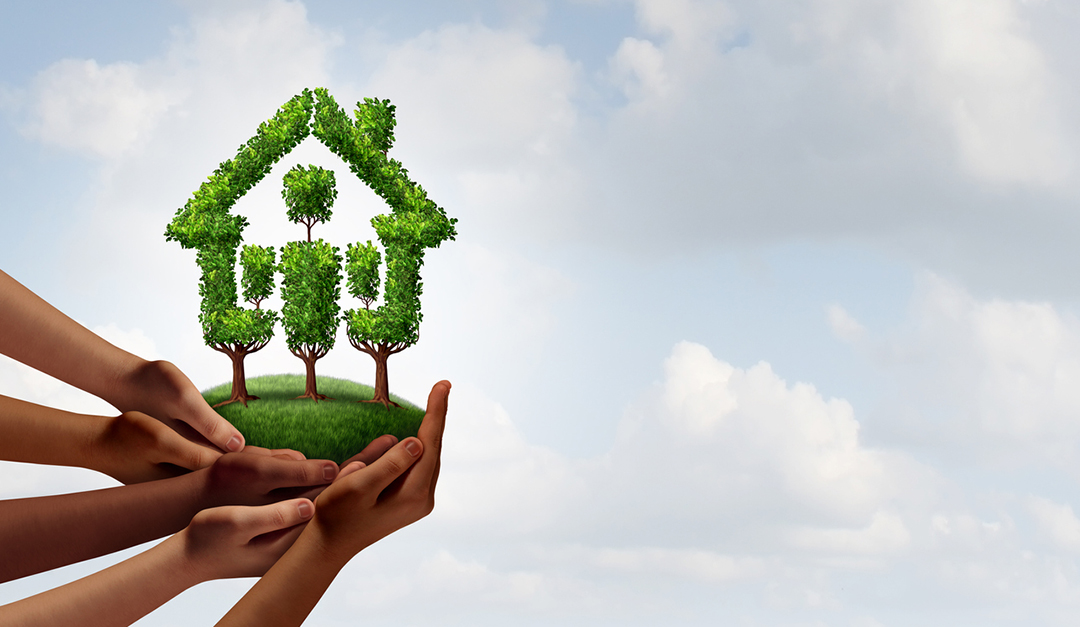Living an eco-friendly life is a priority for many U.S. homeowners, and so LEED (Leadership in Energy and Environmental Design) certifications are rapidly growing in popularity.
What does it mean to be certified? According to the U.S. Green Building Council (USGBC), green building means “designing, constructing and operating buildings to maximize occupant health and productivity,” while utilizing fewer resources, lessening negative environmental impacts and reducing waste. LEED is the most widely used ranking system in the country, states USGBC.
According to a new report by the USGBC, LEED in Motion: Residential, these certified homes have increased by 19 percent since 2017, currently at a historic high. Over 400,000 units in the U.S. and almost 500,000 single-family, multifamily and affordable housing properties are certified.
“One of the most important investments a person will make is in their home, and the quality of these spaces can have a direct impact on an individual’s health and well-being,” said Mahesh Ramanujam, president and CEO of USGBC, in a statement. “As an industry, we want to find ways to raise everyone’s living standard, so we need to prioritize the construction and remodeling of homes so that they are not only environmentally-friendly, but they also have the power to improve the quality of life for all human beings.”
The top 10 states with LEED-certified residential units are:
- California
Number of certified residential units: 39,296
Gross square footage: 46,252,746
- Texas
Number of certified residential units: 24,598
Gross square footage: 41,425,633
- New York
Number of certified residential units: 10,876
Gross square footage: 12,700,343
- Washington
Number of certified residential units: 10,521
Gross square footage: 11,856,316
- Colorado
Number of certified residential units: 8,091
Gross square footage: 9,870,645
- New Jersey
Number of certified residential units: 7,646
Gross square footage: 8,790,645
- Ohio
Number of certified residential units: 7,402
Gross square footage: 9,755,348
- Oregon
Number of certified residential units: 6,729
Gross square footage: 7,961,683
- Maryland
Number of certified residential units: 5,966
Gross square footage: 9,019,059
- Georgia
Number of certified residential units: 5,891
Gross square footage: 7,299,589
According to the USGBC, certified homes typically use up 20 to 30 percent less energy than traditional homes—but some homeowners have reportedly seen up to 60 percent in savings. This certification is said to reduce exposure to toxins and pollutants, which can often lead to health concerns related to asthma, allergies and other respiratory issues.
Many builders steer clear from green construction due to a fear of cost increases; however, the USGBC reports that these homes can typically be built for the same cost or for less, and can even sell more quickly and at higher price points than traditional homes.
Efforts for LEED certification include: enhanced ventilation, garage pollutant protection, radon-resistant construction, enhanced compartmentalization and low-emitting products.
What is the process for certifying a new-construction home? Builders must first register the project as Single Family, Multifamily or Multifamily Core and Shell. Then they must choose the “green” priorities for their project, such as energy efficiency, carbon reduction, etc. Builders can then review what tools and resources are available for LEED projects and must document their progress in meeting the rating system requirements before submitting for review.
LEED-certified buildings often come with an added bonus: more affordable monthly utility costs. And for buyers that are concerned about pricing, the USGBC states that over 78,000 certified units are categorized as affordable housing.
“It can be difficult to see why prioritizing a green home is important, but the environmental and personal health outcomes are very real,” said Ramanujam. “Our own research tells us people understand reducing waste, conserving energy and water, and limiting our carbon footprint are important, but it can feel too daunting. By building and buying green homes we make those actions easier to do, while also creating a healthier, more sustainable environment for ourselves and future generations.”
 Liz Dominguez is RISMedia’s associate content editor. Email her your real estate news ideas at ldominguez@rismedia.com.
Liz Dominguez is RISMedia’s associate content editor. Email her your real estate news ideas at ldominguez@rismedia.com.











